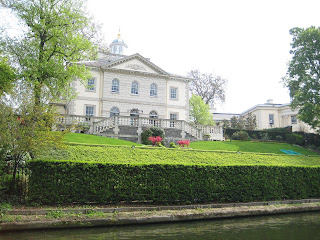Here is the site of my pictures taken at the site of Maynard Keynes and also at Lytton Strachey
http://www.panoramio.com/map/?user=3204142#lt=51.524101&ln=-0.1300095&z=0This is a list of the unique group of Bloomsbury artist, poets and thinkers:
Helen Anrep
Clive Bell
Grew up at Cleeve House in Wiltshire
moves to 50 Gordon Square with wife Venessa
Julian Bell
Quentin Bell
Frederick and Jesse Etchells
E.M. Foster
9 Arlington Park Mansions, Turnham Green Terrace, W4
Roger Fry
born in 1866 in Highgate, London
Angelica Garnett
David 'Bunny' Garnett
1916 farmhouse Charleston Farmhouse. Firle, East Sussex.
Garrick's Villa, Hampton Court Road, Richmond-upon-Thames
Duncan Grant
1909 moved to 21 Fitzroy Square
1916 farmhouse Charleston Farmhouse. Firle, East Sussex.
Mary Hutchinson
Maynard Keynes
46 Gordon Square, WC1
Wyndham Lewis
Vanessa Stephen (Later Bell)
Born 1879 lived in Hyde Park Gate
1904 moved to 46 Gordon Square, Bloomsbury.
1916 farmhouse Charleston Farmhouse. Firle, East Sussex.
Lytton Strachey
51 Gordon Square, WC1
Leonard Woolf
29 Fitzroy Square, W1
Virginia Woolf
25 January 1882 to May 1904 at 22 Hyde Park Gate, W8
January 1905 to March 1907 at 46 Gordon Square, WC1
April 1907 to November 1911 at 29 Fitzroy Square, W1
20 November 1911 to 29 October 1912 at 38 Brunswick Square, WC1
30 October 1912 to September 1913 at 13 Clifford’s Inn, between Chancery Lane, WC2, and Fetter Lane, EC4
16 October 1914 to 25 March 1915 at 17 The Green, Richmond upon Thames, Surrey
15 March 1924 to August 1939 at 52 Tavistock Square, WC1
13 October 1939 to 27 August 1940 at 37 Mecklenburgh Square, WC1
+078.JPG)



















+093.JPG)
+110.JPG)
